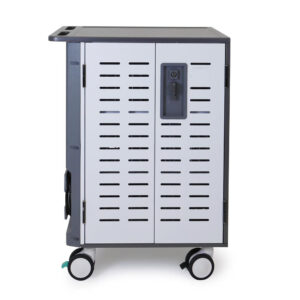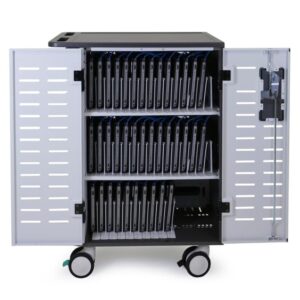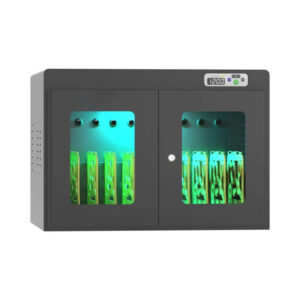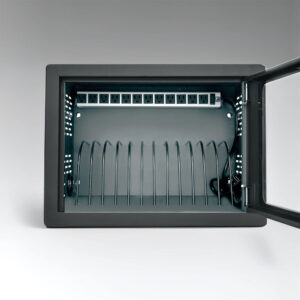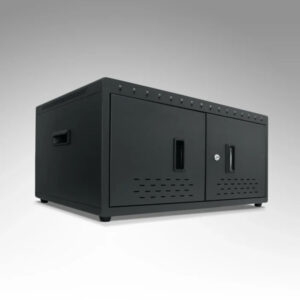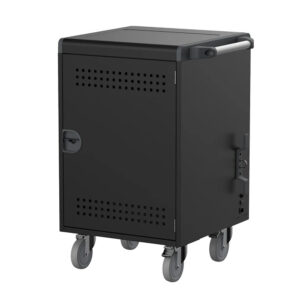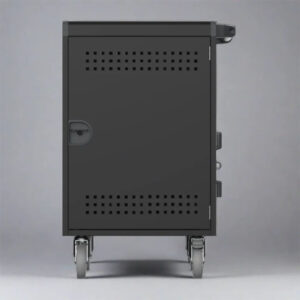Summary
A charging cabinet is a specialized storage unit designed to securely charge multiple electronic devices simultaneously, such as laptops, tablets, and smartphones. As technology continues to integrate into everyday life, these cabinets have become essential in various settings, particularly educational institutions, corporate environments, and public spaces. Their ability to provide organized, safe, and efficient charging solutions has led to increased demand and innovation in their design, making them notable in the context of device management and user convenience.
Charging cabinets come in several types, including standard, smart cabinets, industrial-grade, and modular systems, each tailored to meet specific needs. Standard models typically offer multiple charging ports and safety features suitable for schools and offices, while smart cabinets incorporate advanced technologies that allow for real-time monitoring and usage tracking, enhancing the user experience in public venues such as airports and shopping malls. Industrial-grade cabinets cater to high-demand environments, featuring robust construction and security mechanisms, while modular systems provide customizable configurations that adapt to changing requirements.
Notably, charging cabinets have sparked discussions surrounding security, accessibility, and cost-effectiveness. The effectiveness of locking mechanisms and the durability of materials used in their construction are crucial factors in preventing theft and ensuring the safety of valuable devices. However, the financial implications of purchasing and maintaining charging cabinets can pose challenges for institutions, particularly educational ones, leading to scrutiny regarding budget allocations and funding opportunities. Furthermore, the evolving landscape of public charging experiences reveals potential reliability issues, underscoring the importance of regular maintenance and operational oversight.
As the market for charging cabinets evolves, manufacturers are focusing on technological advancements, sustainability, and customization to meet diverse consumer needs. This trend indicates a shift towards innovative designs that not only enhance functionality but also align with aesthetic preferences, reflecting a broader movement in cabinetry towards personalization and eco-friendly practices. The future of charging cabinets is poised for continued growth as they adapt to the changing demands of technology integration in everyday environments.
Table of Contents
Types of Charging Cabinets
Charging cabinets come in various designs and configurations to meet the diverse needs of users across different settings. Each type serves unique functionalities and can accommodate a range of electronic devices.
Standard Charging Cabinets
Standard charging cabinets are equipped with multiple charging ports and shelves designed to store and charge devices such as laptops, tablets, and smartphones simultaneously. These cabinets often feature safety mechanisms to ensure that devices are securely stored while charging, making them ideal for educational institutions and corporate environments where multiple devices need to be managed efficiently.
Smart Charging Cabinets
Smart charging cabinets are advanced versions that integrate smart technology for optimal performance. These cabinets not only provide charging services but also monitor the status of each device in real-time. They are widely used in public spaces like malls, airports, and train stations, enhancing user experience by offering convenient charging options while managing device usage effectively. Smart cabinets often include features like usage reports and performance tracking to help organizations optimize their operations.
Industrial-Grade Charging Cabinets
Industrial-grade charging cabinets are designed for heavy-duty use in settings such as healthcare facilities and industrial environments. These robust cabinets typically feature individual compartments for each device, integrated power management, and ventilation systems. Their secure locking mechanisms protect valuable technology investments, making them suitable for environments where devices must be stored safely and charged reliably.
Modular Charging Systems
Modular charging systems consist of separate cabinets for chargers, power electronics, and communication systems. This design allows for flexible configurations that can be adapted to meet varying requirements, making them ideal for rapidly changing environments. These systems often support a variety of devices, including handheld gadgets and larger electronics, facilitating efficient charging and storage solutions.
EV Charging Cabinets
EV charging cabinets are specialized enclosures designed for housing the electrical components necessary for charging electric vehicles. These cabinets are essential for public and private charging stations, ensuring that the equipment is protected while providing efficient charging capabilities.
Multi-Functional Charging Cabinets
In response to evolving consumer needs, multi-functional charging cabinets have emerged as versatile solutions. These cabinets can serve multiple purposes, such as acting as workstations or concealing appliances while also providing built-in charging stations. Their adaptability makes them a popular choice for modern households and busy work environments, where efficiency and space optimization are key.
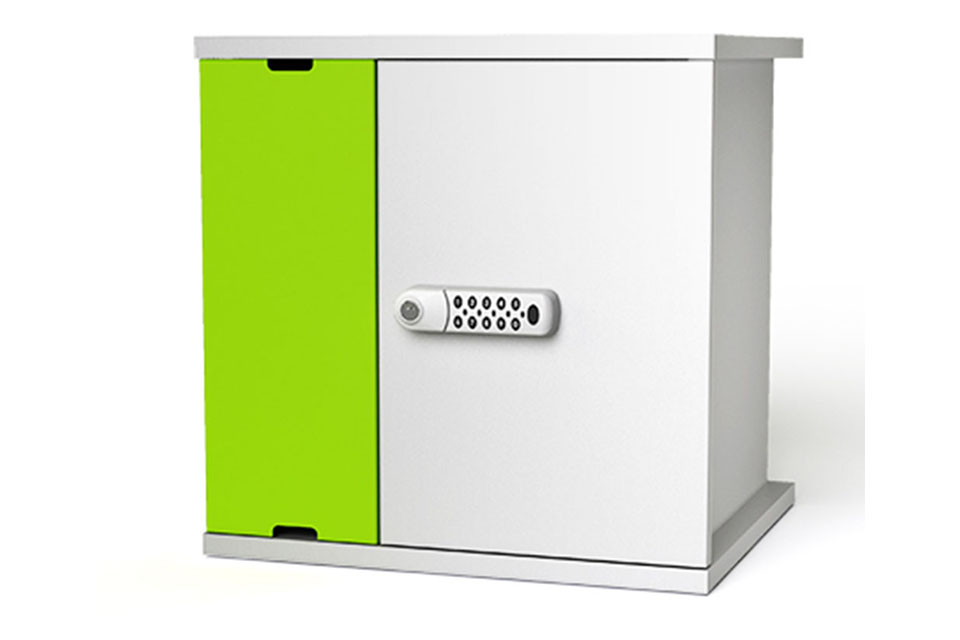
Design and Features
Charging cabinets are designed with a blend of functionality and aesthetics, incorporating innovative features that cater to modern technological needs. These cabinets prioritize not only efficient charging but also the security and organization of devices.
Security Features
Security is a paramount consideration in the design of charging cabinets. Users frequently highlight effective locking mechanisms and robust construction, which provide peace of mind by protecting devices against theft and damage. For instance, the Lyte 30 Single Door Tablet USB C Mobile by LapCabby is noted for its durable design tailored to withstand the rigors of high-traffic settings. A Network Manager has remarked on the cabinet’s positive reception among both students and staff, emphasizing its role as a long-term solution for device security.
Material and Construction
Typically constructed from durable materials, such as metal (mostly steel), charging cabinets ensure longevity and provide a degree of physical security for the devices housed within them. The use of high-quality materials reduces the likelihood of damage or break-ins, thereby safeguarding valuable technology investments in environments like schools and offices.
Portability and Compatibility
In dynamic environments, the mobility of charging cabinets is essential. Many designs incorporate wheels or lightweight constructions, making it easy to adapt to changing layouts or needs. Additionally, compatibility with various tablet models, including those with protective cases, is crucial for ensuring seamless integration into existing technology environments.
Ease of Use and Reliability
User-friendliness is a critical factor in the effectiveness of charging cabinets. Systems that are intuitive and straightforward to operate facilitate quick access to equipment, which is particularly valuable in educational settings where efficiency is key. Reviews from users indicate a strong appreciation for the reliability of these cabinets, highlighting their effectiveness in safely charging and managing devices. A Senior Desktop Support Specialist noted that their charging cabinet keeps equipment secure, demonstrating its reliability in demanding environments.
Design Aesthetics
The aesthetic appeal of charging cabinets is increasingly emphasized, as they must complement contemporary interiors while remaining functional. Incorporating sleek metal trims, brass handles, or aluminum inlays can elevate the visual appeal, allowing the cabinets to blend seamlessly into various design schemes. Collaborating with skilled cabinet makers ensures that every detail aligns with the homeowner’s or organization’s vision, enhancing the overall design and functionality of the space.
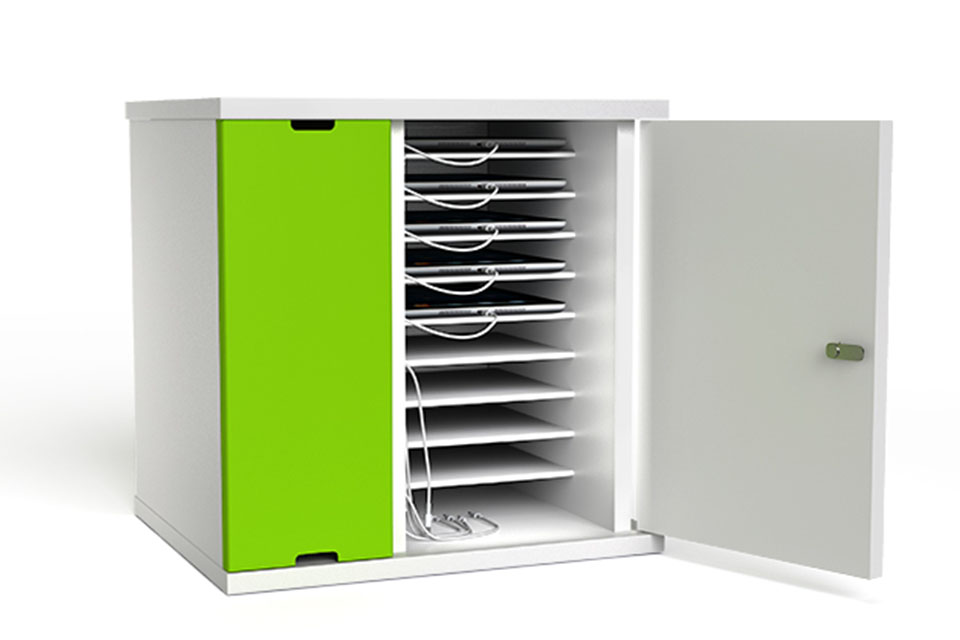
Applications
Charging cabinets play a crucial role in modern educational environments, particularly in facilitating the effective use of mobile devices such as laptops, tablets, and interactive flat panel displays (IFPDs). These devices have become integral to teaching and learning, enhancing engagement and interactivity in classrooms. Charging cabinets serve multiple functions that cater to the needs of both students and educational institutions.
Enhancing Learning Environments
The use of charging cabinets supports a 1:1 learning model, allowing each student to have access to a personal device. This promotes safe, secure, and focused learning experiences while ensuring devices remain charged and ready for use. By providing a designated space for device storage and charging, these cabinets minimize disruptions that may arise from low battery issues during lessons.
Streamlining Device Management
Charging cabinets simplify the logistical challenges associated with managing multiple devices across a school or campus. They offer advanced locking systems and durable construction, ensuring that devices are stored securely. Furthermore, they can be integrated into a mobile device management (MDM) system, enabling IT staff to monitor device status, perform updates, and troubleshoot issues remotely. This capability significantly reduces the time IT departments spend on maintenance and management tasks.
Supporting Safe and Efficient Charging
With features like wireless charging and multiple outlet options, charging cabinets cater to a variety of devices and user preferences. They provide a fast and efficient way to ensure that devices are ready for use when needed. Additionally, some cabinets include sanitization features that disinfect devices, enhancing safety in educational settings.
Data Collection and Student Engagement
Innovative charging solutions also incorporate data-gathering capabilities, allowing schools to gain insights into student usage patterns and preferences. For instance, platforms like Canvass™ by goCharge enable schools to engage with students through surveys and incentives, fostering better communication and a more tailored educational experience.
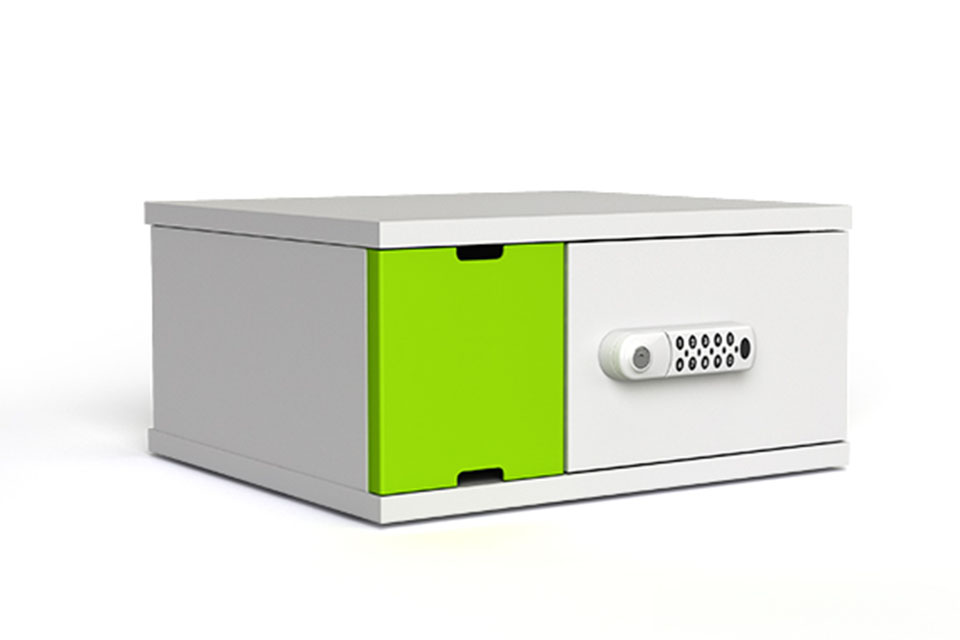
Benefits
Charging cabinets offer numerous advantages that enhance both the management and accessibility of electronic devices in various settings, including educational institutions and workplaces. These benefits can be categorized into several key areas.
Optimal Charging and Device Readiness
One of the primary benefits of charging cabinets is their ability to ensure devices are always ready for use. They feature intelligent charging systems that deliver optimal power to each device, preventing overcharging and extending battery life. This capability is crucial in environments like schools, where timely access to technology is essential for effective learning.
Security and Theft Prevention
Security features in charging cabinets are vital for protecting valuable devices from theft and damage. Users often emphasize the importance of effective locking mechanisms and robust construction, which provide peace of mind. Charging cabinets offer a secure storage solution, allowing schools and businesses to safeguard their investments in technology.
Streamlined Device Management
Charging cabinets simplify the management of multiple devices by allowing simultaneous charging and storage. This streamlining saves valuable time for both students and staff, eliminating the hassle of manual distribution. The organized structure of charging cabinets helps maintain order and efficiency within a classroom or office setting.
Accessibility and Inclusivity
Many modern charging cabinets are designed with accessibility in mind, incorporating features that cater to users of varying tech-savviness. This includes user-friendly interfaces and compatibility with assistive technologies, ensuring that all users can easily access and use the devices stored within.
Enhanced Learning Experience
By providing a reliable charging solution, these cabinets contribute to a more connected and efficient learning environment. They enable students to focus on their studies without the interruption of dead batteries, thereby enhancing the overall educational experience. Regular maintenance and support services further ensure that the charging solutions remain effective over time.
Compliance with Safety Standards
Charging cabinets are often designed to meet rigorous safety standards, including fire safety and electrical compliance. This adherence not only protects the devices but also ensures a safe environment for users. Features such as fire suppression methods and regular inspection protocols help minimize risks associated with battery charging.
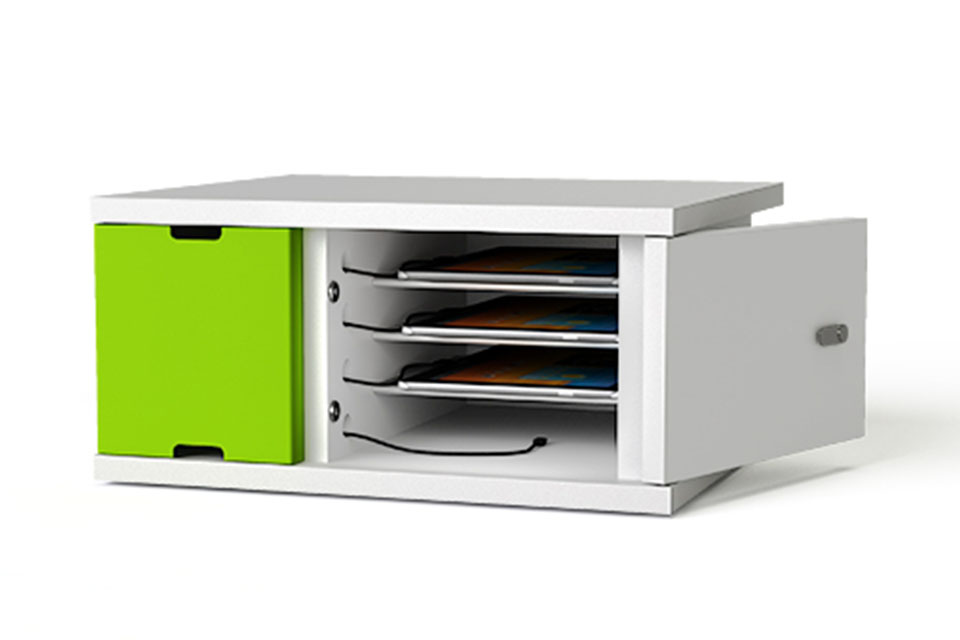
Limitations
Charging cabinets, while offering numerous benefits for the storage and charging of electronic devices, do have certain limitations that users should consider.
Cost Considerations
The financial implications of investing in charging cabinets are also significant. The initial costs can vary widely based on features, brand, and capacity, ranging from $200 to $1,500. Additionally, ongoing maintenance and repair costs should be factored into the total cost of ownership, which can strain budgets, particularly in educational settings where cost efficiency is crucial. While funding opportunities may exist, navigating these financial aspects remains a challenge for many institutions.
Safety and Storage Restrictions
One primary limitation involves safety regulations surrounding the storage of lithium-ion batteries. Basic safety rules must be adhered to, such as preventing external short circuits and avoiding high temperatures, which can be a challenge in certain environments. Furthermore, when storing larger quantities of low-power lithium-ion batteries, specific recommendations for medium-power batteries must also be observed, complicating the storage process. This necessitates careful planning and the selection of appropriate storage cabinets equipped with necessary safety features, which may not always be readily available.
Public Charging Experience Issues
For businesses and institutions looking to provide public charging solutions, the user experience can be problematic. A 2022 audit revealed that nearly 28% of public fast charge stations were unusable due to maintenance and operational issues. This highlights a critical limitation in the reliability of public charging infrastructures, which could deter users from utilizing these services. As such, organizations must consider the potential downtime and customer dissatisfaction associated with malfunctioning equipment when investing in charging cabinets for public use.
Scalability and Expansion Challenges
Another limitation is the scalability of charging cabinets. While they are designed to accommodate a specific number of devices, planning for future expansion can be complex. The need for increased power capacity, additional chargers, and upgraded equipment must be anticipated from the onset of installation, which can complicate the initial design and budgeting processes. Failure to adequately plan for scalability may hinder an organization’s ability to adapt to growing demands for charging solutions in the future.
Security Concerns
Finally, security remains a prominent issue, especially in environments such as schools and public spaces where theft or unauthorized access to devices can occur. While many charging cabinets are equipped with locking systems, these features can vary widely in effectiveness, and some units may not offer sufficient protection against theft or tampering. Organizations must carefully assess the security features of charging cabinets to ensure they meet their specific needs and protect their investments effectively.
Market Overview
The charging cabinet market is witnessing significant changes driven by evolving consumer preferences and technological advancements. Manufacturers are increasingly adopting flexible sourcing strategies, such as dual-sourcing materials and diversifying production locations, to mitigate risks associated with global uncertainties and supply chain disruptions. This approach ensures stable pricing and favorable trends for both suppliers and buyers in the cabinet market.
Shift in Production Locations
A notable trend in the industry is the shift of production to Southeast Asia, spurred by risk analyses that have highlighted vulnerabilities in traditional manufacturing hubs. Geopolitical tensions and unpredictable trade policies have prompted manufacturers to relocate to regions with more resilient supply chains, such as Vietnam. This shift not only enhances supply chain stability but also aligns with the growing demand for sustainable manufacturing practices.
Technological Innovations
Technological advancements play a crucial role in shaping the charging cabinet market. The integration of sustainable materials and smart design innovations, such as IoT-enabled storage solutions, is becoming a key area of growth. These technologies not only enhance functionality but also attract eco-conscious consumers, positively influencing market trends. Additionally, advancements in CNC machinery, robotics, and AI-driven design optimization are enhancing production efficiency and product quality, which further helps stabilize pricing.
Customization and Personalization Trends
The demand for customized solutions is on the rise, as consumers increasingly seek cabinetry that reflects their personal style and specific needs. This trend is bolstered by digital design tools and flexible production methods that support the custom cabinet industry. Brands that offer personalized, high-quality cabinetry are likely to gain a competitive edge in the market. Emphasizing customization allows manufacturers to capture emerging trends as consumers prioritize bespoke aesthetics and functionality over mass-produced options.
Competitive Strategies for Brands
In response to the changing dynamics of the cabinet market, brands are encouraged to enhance their marketing strategies, target niche markets, and utilize market data to adjust pricing and procurement strategies. By monitoring cabinet market statistics, manufacturers can remain agile and responsive to fluctuations in consumer demand and raw material availability. For instance, leveraging data from sources like the KCMA report can help brands optimize their supply chain management and pricing strategies.
As the market continues to evolve, it is essential for industry players to adopt proactive approaches, focusing on sustainability, innovation, and customization to navigate the challenges presented by a fluctuating market landscape.



